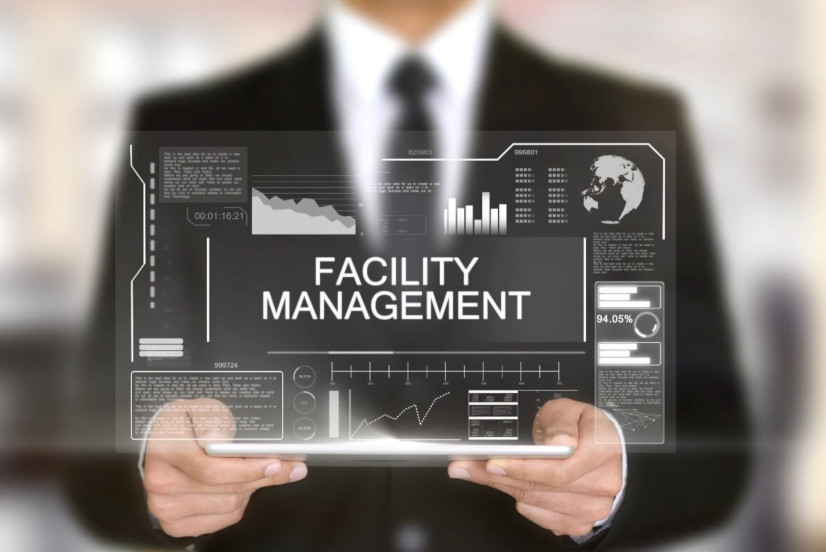How Total Facility Management Boosts Workplace Efficiency and Business Outcomes
Wiki Article
Leading Benefits of Total Facility Management for Streamlined Workflow
Total Facility Management (TFM) stands for a critical technique to improving operational efficiency by integrating numerous solutions, such as maintenance and safety and security, under a unified management framework. This debt consolidation not just reduces redundancies but also leverages information analytics for notified decision-making and predictive maintenance. In addition, TFM promotes streamlined communication amongst stakeholders, lining up operations with broader business goals. However, the inquiry stays: what specific benefits can organizations harness from taking on TFM, and exactly how might these advantages transform their functional landscape?Enhanced Operational Performance
Enhanced operational performance is a primary benefit of carrying out total facility management (TFM) methods. TFM incorporates an extensive technique to taking care of a facility's resources, procedures, and framework, ultimately improving procedures. By settling various services-- such as maintenance, security, space, and cleaning management-- TFM decreases redundancies and enhances coordination among different operational functions.
The integration of technology further enhances this effectiveness. Advanced facility management systems provide real-time data analytics, enabling facility supervisors to make enlightened choices that boost workflow and resource allotment. Predictive maintenance techniques, for instance, prepare for tools failings before they happen, decreasing downtime and prolonging asset lifespan.
In addition, TFM advertises standard processes across numerous divisions, making sure consistency and quality in service distribution. This harmony decreases operational disturbances and cultivates a much more collaborative workplace. Consequently, employees can concentrate on their core obligations, driving efficiency and enhancing total performance.

Expense Decrease and Savings
Carrying out total facility management (TFM) not only boosts operational performance but likewise dramatically adds to cost reduction and financial savings. By consolidating different solutions under a solitary management structure, companies can remove redundancies and streamline processes, consequently lowering operational costs. TFM allows far better purchase strategies, enabling business to discuss bulk purchasing agreements with vendors and solution carriers, bring about lower prices.Furthermore, TFM highlights precautionary upkeep, which lessens unanticipated failures and expands the life-span of critical equipment. This proactive method not only reduces repair work costs but also enhances the reliability of facilitiess, ensuring nonstop procedures. In addition, power effectiveness efforts, typically an essential focus of TFM, lead to substantial financial savings on energy expenses, as facilitiess are optimized for lowered power usage.
Improved Resource Management
Reliable source management is a cornerstone of total facility management (TFM), making it possible for companies to enhance using their assets and labor force. By executing TFM techniques, organizations can thoroughly examine their source allocation, making certain that every asset is utilized effectively and successfully. This alternative method permits the recognition of underperforming resources and the possibility for reallocation or improvement.In addition, TFM assists in the combination of technology for real-time monitoring of resources, which helps in anticipating maintenance requirements and protecting against pricey downtime. By leveraging data analytics, companies can make informed decisions about resource deployment, ultimately enhancing efficiency and reducing waste.
Additionally, TFM advertises a culture of continuous enhancement, urging groups to frequently review and fine-tune their resource management methods. Total Facility Management. This positive position not only lessens operational disturbances but also promotes innovation, as staff members are empowered to suggest enhancements based on their direct experiences with look at here resource use
Streamlined Communication Networks
In total facility management, streamlined communication channels play an important role in promoting partnership and effectiveness throughout groups. Effective communication makes certain that all stakeholders, consisting of facility supervisors, upkeep staff, and provider, are aligned with operational demands and organizational objectives. By establishing clear lines of interaction, groups can swiftly deal with issues, share updates, and implement options, consequently reducing downtime and improving performance.With streamlined communication systems, info is quickly accessible, permitting real-time basics updates on upkeep requests, resource appropriation, and task timelines. This transparency not only reduces misconceptions however also encourages workers to make enlightened decisions quickly. Furthermore, streamlined interaction facilitates much better sychronisation during emergencies, ensuring that all workers are notified and can react immediately.

Enhanced Emphasis on Core Activities
A crucial benefit of total facility management is the enhanced emphasis on core tasks, permitting companies to focus on their main organization goals - Total Facility Management. By outsourcing non-core features such as cleansing, security, and upkeep, companies can reroute their resources and power towards tactical initiatives that straight add to their competitive benefit and developmentTotal facility management integrates different operational jobs under a solitary umbrella, fostering effectiveness and decreasing redundancy. This consolidation not just improves processes yet likewise improves liability, ensuring that every aspect of the facility operates sympathetically without drawing away interest from what absolutely matters-- core company functions.
Furthermore, this method enables employees to devote their time and efforts to tasks that drive development and enhance customer fulfillment, instead than obtaining stalled by functional obstacles. With a reputable facility management partner managing day-to-day operations, companies can accomplish greater agility, react swiftly to market adjustments, and keep a sharper concentrate on their mission.
Eventually, enhanced concentrate on Read More Here core activities leads to enhanced overall efficiency, enabling companies to enhance their market setting and satisfy their calculated goals more properly. - Total Facility Management
Final Thought
In conclusion, Total Facility Management significantly enhances operational performance by settling necessary services and leveraging information analytics for educated decision-making. Cost reductions and improved resource management add to total financial savings, while structured interaction networks foster cooperation amongst stakeholders.Total Facility Management (TFM) stands for a tactical method to improving operational efficiency by integrating various solutions, such as upkeep and safety, under a unified management framework.Improved operational efficiency is a key advantage of carrying out total facility management (TFM) methods. Advanced facility management systems provide real-time information analytics, allowing facility managers to make informed decisions that improve workflow and resource appropriation.Applying total facility management (TFM) not only boosts functional effectiveness however also dramatically adds to cost decrease and cost savings.Effective source management is a cornerstone of total facility management (TFM), allowing companies to enhance the use of their properties and workforce.
Report this wiki page